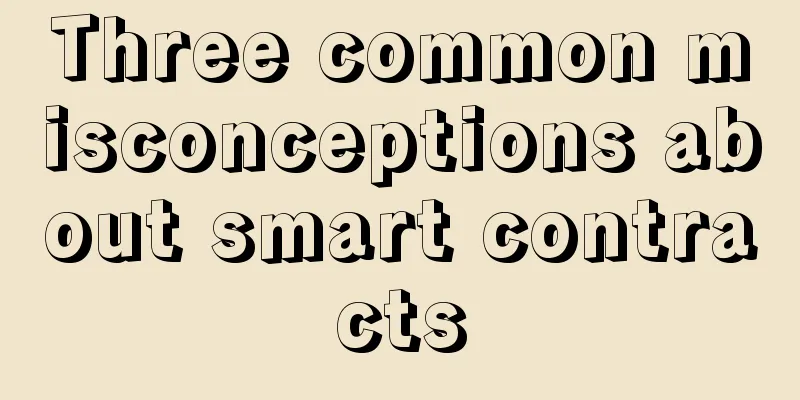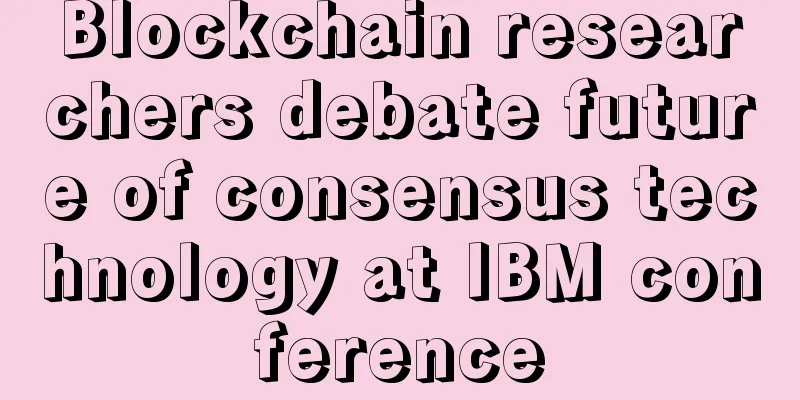Three common misconceptions about smart contracts

|
Olivier Rikken is a principal at Amsterdam-based consultancy Axveco and a thought leader on blockchain and business process management. In this article, Rikken points out three common misconceptions about smart contract technology. Smart contracts are one of the most promising ideas in the development of blockchain. Cryptography expert Nick Szabo first mentioned the concept in his 1994 paper "Smart Contracts", which Szabo described as "a computer transaction protocol that executes the terms of a contract." Today, the rise of the Ethereum blockchain has promoted the development and deployment of the concept of smart contracts. However, this has also led to a lot of misunderstanding about the concept of smart contracts. (For those who are not familiar with smart contracts, this article provides a good introduction). Before we get into the topic, I want to say that I believe the possibilities and number of applications of smart contracts are huge, and it can be a real game changer in all walks of life. But I noticed that many people in the industry don’t know much about smart contracts, what are they, how do they work, and what can they be used for? Here are the three most common questions I encounter: 1. “Smart contracts are just code, not contracts”Some people often quote the phrase “Smart contracts are neither smart, they are not contracts, they are just dumb code”. In many cases, this may be true, such as when you are creating a decentralized application that does not involve the transfer of value. However, in other cases, smart contracts can have more properties than traditional contracts. When we look at a regular contract, the semantics of the contract is made up of two main elements:
Why do people create contracts in the first place? Mainly because they don’t fully trust the other party to enforce the agreement (despite a verbal agreement) or to provide proof to third parties that the transfer of goods is legal. Keeping in mind the operational elements of contract semantics, if a smart contract is the result of an agreement between two or more parties, and it has been "signed" by all parties, it can be considered the operational semantics of a traditional contract (albeit written in an unfamiliar language). Conflicts are handled in much the same way as for all traditional contracts, such as through the courts, mediation, etc. The main difference is that in many cases the transfer of value is the result of automated contract execution having already occurred. 2. “Smart contracts can operate completely autonomously”This is the second common misunderstanding about smart contracts. People often have the perception that a smart contract can actively scan its environment and perform corresponding changes, that is, a smart contract can actively query an external database and change its state based on the query results. The essence of blockchain is driven by transactions, and the same is true for smart contracts, so smart contracts are also passive. The code of a smart contract is only executed when a transaction is called or a message is sent to it. The execution of a smart contract can be triggered by sending a transaction from an external account (owned by a natural person or company) or by another smart contract (this other smart contract is triggered by a transaction or its own message) sending a message to this smart contract. Furthermore, the information provided by smart contracts during execution is quite limited. As mentioned in the Ethereum paper, “This execution needs to be completely deterministic, with the only context being the block location on the blockchain and all available data”, and further, “It is not only sandboxed, but actually completely isolated, meaning that code running in the EVM cannot access the network, file system, or other processes. There are even limits on access between smart contracts.” The available data is the data sent to the contract in a transaction or message, plus the data in the storage (state) and memory of the contract. Of course, there are also smart contracts that can call other smart contracts (such as reading the balance of other smart contracts). Many experts do not recommend Furthermore, smart contracts can only do basic calculations such as addition, subtraction, and division. They cannot perform big data analysis. Therefore, when it comes to designing smart contracts, you have to know that at this time, they are passive, they can only do some basic calculations, and have only limited interactive possibilities. The examples described here are mainly based on Ethereum smart contracts, which leads to the last common cognitive error. 3. “This smart contract”There is no such thing as THE smart contract. Just as people often misinterpret the term “blockchain” when it does not refer to a specific blockchain (such as Bitcoin, Ethereum, Hyperledger, etc.), the same mistake is often made with smart contracts. Most blockchains are simply not suitable for developing smart contracts, and if they do, it is only done in a very limited form or through sidechain solutions. So when it comes to designing solutions that require smart contracts, there is no such thing as THE smart contract. In order to create a smart contract that meets your needs, you need to be very careful when deciding which blockchain to use. |
<<: Babb's blockchain plan could turn everyone into a bank
>>: Nigeria plans to legalize Bitcoin amid widespread cryptocurrency scams
Recommend
About Filecoin's block framework---tipsets
Recently, some friends have been asking, what are...
Analysis of love fortune from mole
Traditional physiognomy covers a wide range, among...
What a bear market looks like
After a turbulent weekend, Bitcoin, Ethereum, and...
The location of moles on shoulders and their fate
The location of moles on shoulders and their fate...
Which female stars have become famous because of their moles?
Most people will try to remove moles on their fac...
Palmistry: Are you destined to be a hard worker?
In real life, we often see some people who always...
What does the forked life line mean in palmistry?
The lifeline in palmistry is one of our three mai...
How do three types of very wealthy women look like?
Everyone wants to have a good life, so that thing...
Analysis of big nose: big nose means good fortune
In physiognomy , the nose represents wealth and i...
Wu said blockchain: Bitmain chose to continue to appeal, the first instance of the currency printing three people need to pay 2.1 million
Wu Blockchain learned that in the case of Bitmain...
Palmistry for marriage, palmistry for not getting married early
Nowadays, there are more and more older single wom...
Ten times the reward! Filecoin Plus Beta may be launched
On November 5, Filecoin officially released a new...
What does a sunken palace of marriage mean? It may lead to divorce.
Facial features actually represent different fort...
What kind of men are smart and capable, suitable for starting a business?
Not everyone is suitable for this great and diffi...
Bitmain's latest mining machine S19 announced the highest energy efficiency ratio in history, reaching 29.5J/TH
Wu said blockchain learned that on the afternoon ...









